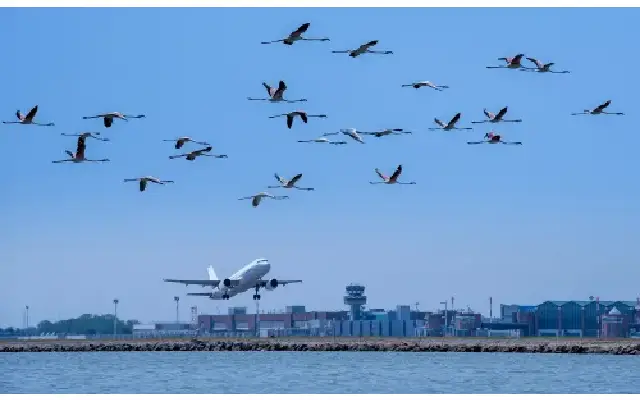Social media is a term that refers to a virtual networking space; the idea of a ‘global village’ is embodied, and the purpose of connecting and communicating to a mass is achieved. The aim of sharing ideas, thoughts, the freedom to express and engage in discourses either through ‘polls’ on Instagram stories or through tweets on Twitter is achieved in social networking sites. One could give and take information, making this medium a two-way virtual interface (Kaur & Kaur, 2017). From creating memes to opening small businesses, social media has changed the way users interact and utilize the interface. Hence, it’s not surprising that there are over 300 million internet users, and there would possibly be 358.2 million (estimated number) social network users, by December 2021. The value of social media increases with the people who interact with such mediums and let it be a part of their growth, psychologically, socially, or politically (Dimri & Goswami, 2019).
To fathom the potential of social media sites on real-time social changes, how the former influences people should be examined. Eltantawy and Wiest (2011) suggest two kinds of social media influence revolutionizing ideas. First, the medium acts as a catalyst for the viral spread of any issue that needs to be addressed. It helps quicken the circulation of information and promulgation, which were less in traditional media. Secondly, social media indirectly influences even the most inactive users to speak about an issue and vocalize it due to virtual peer pressure (Obaid, H. 2020). The time of social media’s conception, its evolution, and the resulting uses are necessary factors that need to be considered while contemplating the possibility of social media bringing about a real-time change in geopolitical and social contemporary changes.
Evidence for social media causing a socio-political difference
Social media such as WhatsApp, Instagram, Facebook, and Twitter have hosted a set of social movements that helped change perspectives. The accelerations in making an issue that has to be addressed are possible only because it’s the most immediate, trusted, and effortless communication medium. Some instances of social media playing a significant role in changing the tables regarding political elections, drafting, amending, or repealing laws are cited below.
Case 1: The 2014 elections
Narendra Modi swayed the netizens by clever usage of Twitter and Instagram for party promotion, campaigning, and connecting with the population intimately to win the 204 elections. He did so in a time when the opposition parties and political candidates did not measure the weight and value of social media, nor was the medium a prevalent method that would prove to be a dependable approach to lobbying. The Twitterati flooded with #NaMo (short for PM Narendra Modi). Some scholars argue that if not for the effective use of social media, NDA (National Democratic Alliance) wouldn’t win the 2014 elections (Pansare, P. 2014). Research on a similar trend concluded that politicians lose due to inconsequential use of social media and an unwillingness to try novel tools of mass communication and persuasion (Jacob, J. 2017).
Case 2: Anti-corruption Lokpal Bill
Anna Hazare’s famous Satyagraha cannot possibly be forgotten. He wanted the parliament of India to officially and actively consider drafting and passing an Anti-corruption bill in 2011. His Satyagraha, a hunger strike, became the foundation of the ‘Anti-corruption Movement.’ This movement received much recognition and support on social media, especially Twitter. Social activists circulated petitions so quickly, and online signatures were given by lakhs of people in just a day. The cause moved the citizens, and the movement went viral on social media. In the light of the rapid vitality that was attached to the implementation of an anti-corruption law, the Government of India came to consider the same (Kaur & Kaur, 2017).
Case 3: Stop Hindi Imposition Movement
A social thought still relevant today is the #stophindiimposition social media movement that gained momentum in Instagram, Twitter, and Facebook. The birth of the movement was caused by the three-language proposition placed by the National Draft Committee. The three-language formula dates back to 1968 – National Education Policy, which made learning the language ‘Hindi’ compulsory in ‘Non-Hindi speaking regions’ of the country (V, K. 2019). The social media users, particularly from South Indian states, resorted to social media to mock the ‘Hindi Imposition’ from the union government. Through satirical jokes, memes, and educational posts, the rebel against the idea of the Hindi language that should be learned as a part of the syllabus became a social media movement. Many admins of meme pages on Instagram continue to cite incidents from their personal life and engage in healthy discourses in the comments sections (Beaureu, ET. 2020).
Case 4: LGBTQ Movement and Section 377 annulment
The Supreme Court declared that Section 377, the Unnatural Offences Act, was unconstitutional in 2019. This legalized same-sex marriage, homosexuality, genderqueer sexual identity, and orientation. But the fight for human rights for the sexual minority groups – Lesbians,
Gays, Bisexuals, Transgender, and Queer (LGBTQ) communities, against Section 377 rested on the solid foundation of social media drives and campaigns. LGBTQ members are observed to prefer social networking sites to express themselves comfortably. It’s significantly used to connect with support groups. Instagram ‘influencers’ such as Alexander Balakrishnan, Sushant Divigr, Priyanka Paul, and Trinetra have played a significant role in bringing about this monumental change in society, reducing transphobia, homophobia, and such issues. A research study found that 97% of the participants believed that because of social media, acceptance of sexual minorities and visibility has increased in recent years (Dimri, & Goswami, 2019).
Case 5: Moral policing by Kavitha Reddy
Kavitha Reddy and a gang of men hounded the actress Samyuktha Hegde her friends to mentally and verbally harass them. They were almost subjected to physical abuse for wearing ‘indecent clothes’ and exercising in a public park by the Congress leader. Samyuktha recorded the entire incident and went live on Instagram, showing Kavitha Reddy’s moral policing. In one video that went viral, a man threatened her to spread false rumours about her in the media. Millions of followers and social media users shared her posts, while news organizations had a field day. The issue escalated in terms of the gravity of the problem, and an FIR was filed against Kavitha Reddy (Kumar, K. 2020). Intimidated by the trolls and the vast social support given to Samyuktha Hegde, Kavitha Reddy issued a shoddy public apology. Samyuktha Hegde accepted the apology and withdrew her legal complaint. She asserted that despite the ‘fake sorry,’ she chose to end the issue, thanking the tool of social media. Kavitha Reddy’s official account remains deactivated.
Critical analysis
There are many downsides to social media usage. In the context of the pandemic, the spread of false data on the effects of Coronavirus, the treatment, and related details are found fabricated in social media, especially WhatsApp forwards. Panic in the pandemic often drives people to believe half-baked information and deceptive theories; thus, news transmission becomes quick and easy. The filter bubble enhances this spread since it would cater to the users’ interests (Worral, R. 2020). The Raj Kundra case, where the producer was accused and arrested for allegedly making adult content, witnessed a new flood of memes, character validations, etc. The wife of the accused, Shilpa Shetty Kundra, was also dragged into the issue, and rumours spread like fire in the virtual world. In response to false accusations thrust upon her, she appealed to the High Court to restrain media houses and social media platforms, including Instagram, Facebook, and Twitter, based on defamation (Vidya, 2021). Thus, social media could be a weapon that could be used in favour, but it could also become a weapon against users.
So, what’s the point?
Through a close examination of the potential of social media in contemporary India, with enough shreds of evidence for both sides of the same coin, it could be concluded that it truly depends on the purpose of use and the method of usage. Social media could undoubtedly bring about a social change since it has been done before. It provides a voice for a collective society, thought, and belief and upholds the fundamental right to speech and expression with utmost decency.
References
n.d. (2020). Role of Social Media in creating awareness of Sexual Violence against Women: An Analysis with Special Reference to #MeToo Movement in India. European Journal of Molecular & Clinical Medicine, 7(7), 6256-6264.
Dimri, N., & Goswami, P. (2019). 26 Invisible to visible: social media and its role in establishing identity of LGBTQ in India. Fashion Institute MMC – UK.
https://fashioninstitute.mmu.ac.uk/assets/uploads/2019/07/26-Invisible-to-visible-socialmedia-and-its-role-in-establishing-identity-of-LGBTQ-in-India-Neha-Dimri.pdf
Dr. Obaid, H. (2020, September 27). The Impact of Social Media on Social movements and public opinion formation. Visto. https://vistointernational.org/publications/the-impact-ofsocial-media-on-social-movements-and-public-opinion-formation/
ET Bureau. (2020, September 14). Leaders and actors in the South take to social media and tshirts to protest the ‘imposition’ of Hindi. The Economic Times. https://economictimes.indiatimes.com/news/politics-and-nation/leaders-and-actors-insouth-take-to-social-media-and-t-shirts-to-protest-imposition-ofhindi/articleshow/78109700.cms?utm_source=contentofinterest&utm_medium=text&utm _campaign=cppst
Jacob, J. (2017, May 17). BJP way ahead of the competition on social media in 2014, says Stanford Univ study. Hindustan Times. https://www.hindustantimes.com/india-news/bjpway-ahead-of-competition-on-social-media-in-2014-says-stanford-university-study/story6Uq81HOwstzCwgCmiSyMWI_amp.html
Kaur, S., & Kaur, M. (2017). Impact of Social Media on Politics. GIAN JYOTI E-JOURNAL.
https://www.gjimt.ac.in/wp-content/uploads/2017/10/3_Surjit-Kaur_ManpreetKaur_Impact_of_social_Media_on_Politics.pdf
Kumar, K. (2020, September 5). Kannada actor Samyuktha Hegde attacked in a public park for wearing workout clothes: ‘We were abused and ridiculed.’ Hindustan Times. https://www.hindustantimes.com/regional-movies/kannada-actor-samyuktha-hegdeattacked-in-a-public-park-for-wearing-workout-clothes-we-were-abused-andridiculed/story-h6XMjWEctNW0Q6kGGAZIAL.html
Pansare, P. (2014, June 11). How social media played a game-changer for election 2014 in the world’s largest democracy | Latest News & Updates at DNAIndia.com. DNA India. https://www.dnaindia.com/blogs/post-how-social-media-played-game-changer-forelection-2014-in-the-world-s-largest-democracy-1994841
Pazzanese, C. (2020, May 8). Social media used to spread, create COVID-19 falsehoods. Harvard Gazette. https://news.harvard.edu/gazette/story/2020/05/social-media-used-tospread-create-covid-19-falsehoods/
Rao, A. (2021, January 14). How did Social Media Impact India’s 2019 General Election? Economic and Political Weekly. https://www.epw.in/engage/article/how-did-socialmedia-impact-india-2019-general-election
Sharma, V. (2012). YOUNG INDIA, SOCIAL NETWORKING SITES & INDIAN POLITICS.
The Indian Journal of Political Science, LXXIII(1), 149–154.
(2021, July 30). “You chose public life”: Bombay HC tells Shilpa Shetty on her plea against media reports. India Today. https://www.indiatoday.in/law/story/bombay-hc-shilpashetty-plea-against-media-reports-1834834-2021-07-30
Venkataramanan, K. (2019, June 8). What is the three-language formula? The Hindu.
https://www.thehindu.com/news/national/what-is-the-three-languageformula/article27698700.ece

















